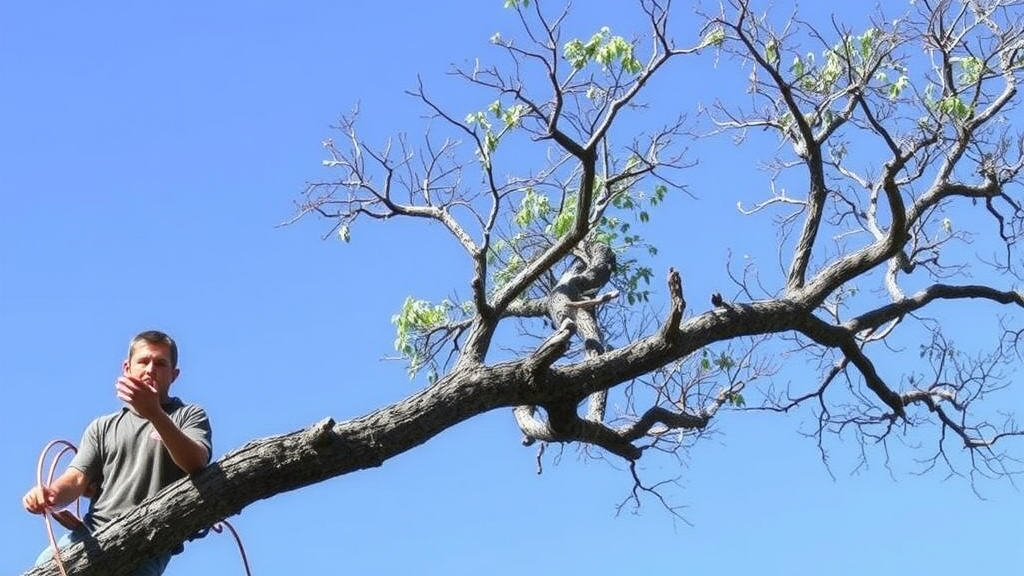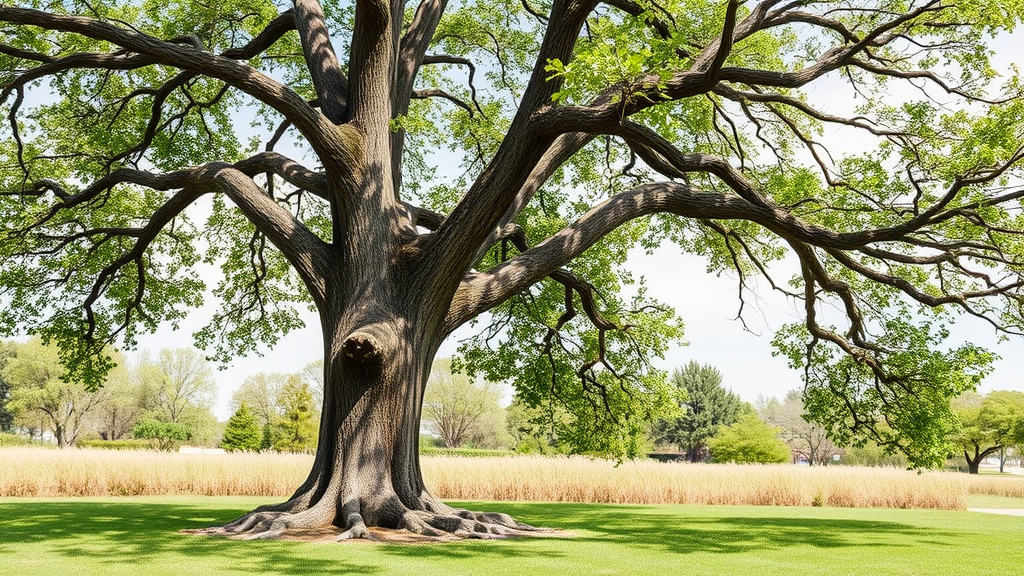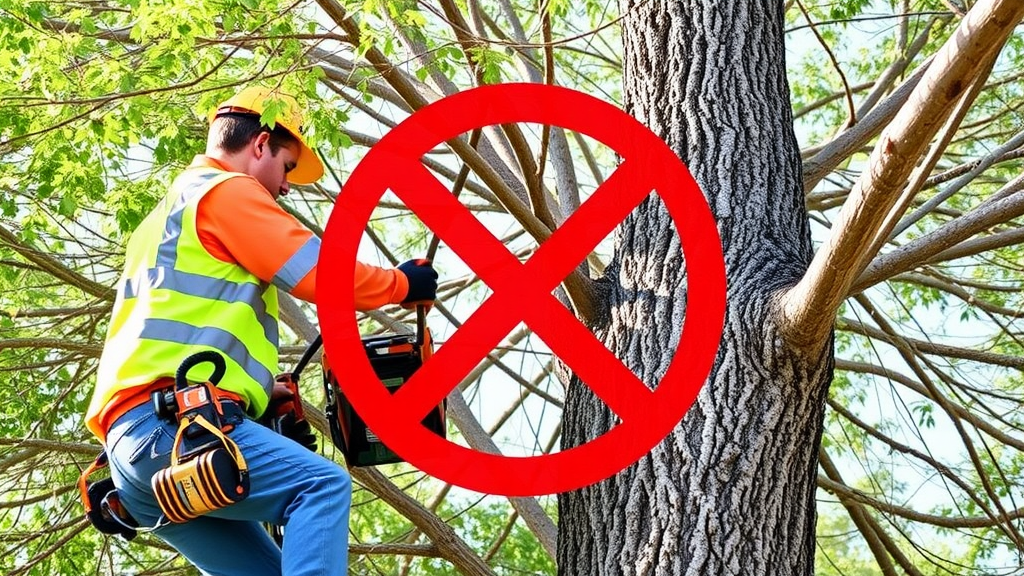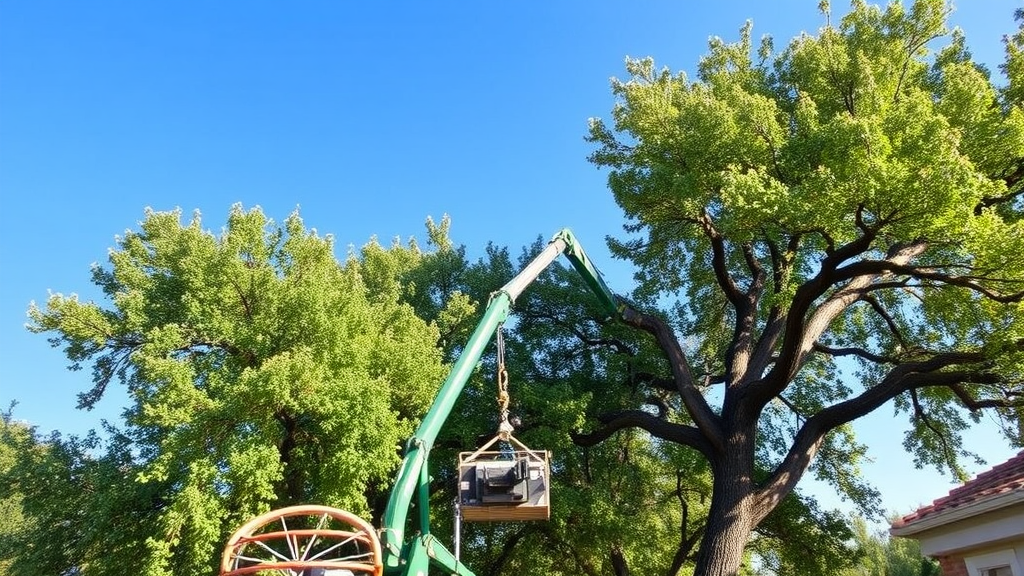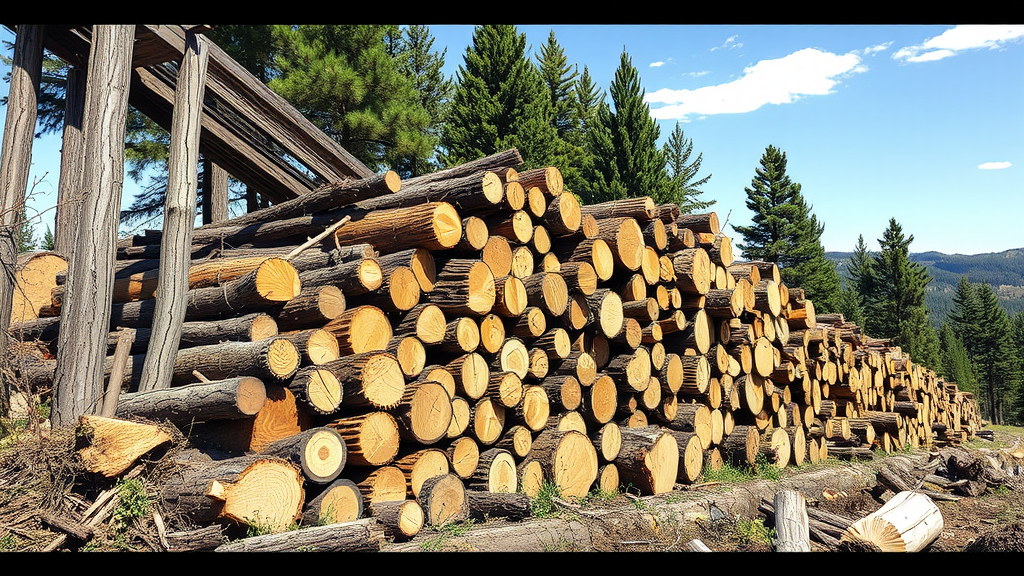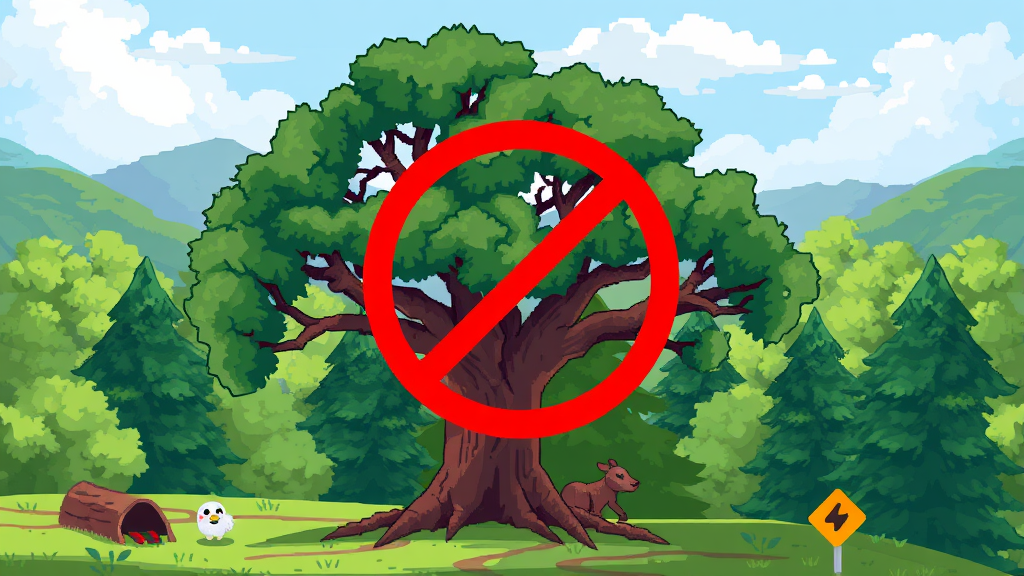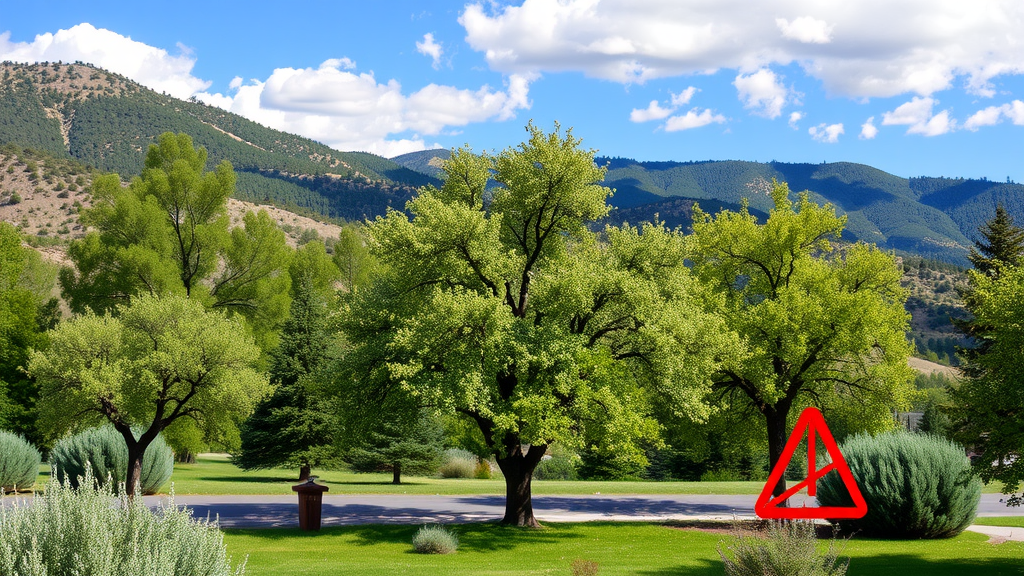Tree Maintenance Check St. George UT

Importance of Regular Tree Maintenance Check in St. George, UT
In St. George, UT, the breathtaking natural scenery comes alive with lush trees lining the streets and parks. Yet, the vibrant beauty of these trees requires regular maintenance to ensure their health and longevity. Regular tree maintenance checks hold significant importance for both aesthetic appeal and safety, making it vital for homeowners and property managers in St. George to prioritize these evaluations.
The unique climate in St. George, characterized by hot summers and mild winters, impacts tree health. Trees exposed to extreme weather conditions become vulnerable to diseases and damage. Regular checks allow for early diagnosis of issues, helping you take action before they escalate. This proactive approach ultimately saves time and money in the long run.
One primary reason for routine maintenance is to enhance safety. Dead or dying branches can pose a risk to people and property during storms or high winds. By regularly inspecting trees, you can identify problem areas that require attention. Hiring professionals to prune or remove hazardous limbs ensures everyone’s safety and prevents potential damage to your home or vehicle.
Healthy trees improve the aesthetics of your landscape, significantly increasing property value. A tree maintenance check helps identify trees that may be overgrown, misaligned, or diseased. Pruning enhances not only the shape and appearance of your trees but also stimulates healthy growth. Well-maintained trees add curb appeal and can even make your property more attractive to potential buyers should you decide to sell.
During a maintenance check, professionals can also assess the overall health of your trees. This assessment includes examining the root system, bark condition, and foliage. A tree that shows signs of stress might require specialized treatment. Some common issues include:
- Fungal infections
- Pest infestations
- Soil compaction
- Nutrient deficiencies
Addressing these issues promptly can make a significant difference in tree health. For instance, treating fungal infections early can prevent spreading to surrounding trees, thus protecting your entire landscape.
Tree maintenance checks also promote environmental benefits. Trees provide vital ecosystem services such as improving air quality, conserving water, and supporting wildlife. A healthy tree canopy can act as a natural air filter, helping to reduce pollution. Additionally, by ensuring your trees are healthy, you contribute to the overall well-being of the St. George environment. Your trees not only beautify your surroundings but also support local wildlife, fostering biodiversity.
Implementing a regular tree maintenance schedule can also help prevent costly emergencies. Imagine a scenario where a storm uproots a neglected tree, causing damage to nearby structures. Such incidents may lead to expensive repairs and insurance claims. On the flip side, proactively managing your trees guarantees they are well-prepared to withstand adverse conditions, significantly reducing the risk of sudden disasters.
Moreover, working with professional arborists ensures safety and expertise. While DIY projects can be tempting to save money, tree maintenance often involves knowledge and skills that professionals possess. Arborists are trained to use the right equipment and techniques, minimizing the risk of injury or additional damage to the tree. Investing in expert help for your tree maintenance checks not only ensures quality care but also gives you peace of mind.
Truco Services Inc.
4640 Commerce Drive
Murray UT 84107 USA
(801) 466-8044
Consider the community impact of regular tree maintenance. Well-cared-for trees contribute to the overall health of neighborhoods in St. George. Community pride flourishes when residents engage in maintaining their landscapes, creating inviting shared spaces for everyone. Participating in tree-health programs can also foster a sense of community, inspiring others to adopt similar practices.
Conducting regular tree maintenance checks in St. George, UT, is essential for health, safety, aesthetics, and community welfare. Whether you manage residential or commercial properties, investing the time and resources into maintaining your trees is undoubtedly beneficial. Consider scheduling your next tree maintenance check today—your trees and your environment will thank you!
Seasonal Tree Care Tips for Homeowners
Taking care of your trees is essential for their health and longevity, especially in St. George, UT, where the climate can present unique challenges. Seasonal tree care is crucial for ensuring your trees not only survive but thrive. Here are some essential tips to help you care for your trees throughout the year.
Spring Care for Trees
As winter fades and spring arrives, it’s time to start your tree maintenance routine. This is a crucial season for pruning and fertilizing.
- Prune Dead Branches: Inspect your trees for any dead or damaged branches. Pruning them allows your tree to direct energy toward new growth.
- Fertilize Wisely: Consider using an organic fertilizer to promote healthy growth. Be sure to follow instructions for optimal results.
- Watering: As temperatures rise, ensure your trees are properly watered. Newly pruned trees may need extra moisture to recover.
Summer Maintenance
Summer can be tough on trees, especially with the heat in St. George. Proper care during these months can keep your trees healthy.
- Mulching: Apply a layer of mulch around the base of your trees. This helps retain moisture and keeps weeds at bay.
- Pest Control: Keep an eye out for pests. Early detection is key. Use natural pest control methods whenever possible to protect beneficial insects.
- Consistent Watering: Make sure to water deeply and consistently. Keep the soil moist, especially during dry spells.
Fall Preparations
As the weather cools and leaves begin to change, it’s time to prepare your trees for winter.
- Late Season Pruning: In early fall, you can prune to shape trees and remove any branches that may have weakened during the summer heat.
- Fertilizing: A slow-release fertilizer can help trees store nutrients for winter. This is especially important for young and newly planted trees.
- Leaf Cleanup: Rake fallen leaves to prevent them from becoming a breeding ground for pests and diseases.
Winter Care
Winter can be hard on trees, but with proper care, you can help them weather the season.
- Assess Damage: After storms, check for broken branches or signs of damage. Remove any that could pose a risk.
- Protection from Snow and Ice: If you live in an area with heavy snowfall, secure branches that may bend under the weight. Use ropes to support larger branches but avoid wrapping them too tightly.
- Watering: Even in winter, trees need moisture. If there’s a dry spell, consider watering them deeply. It helps prevent dehydration.
Additional Tips
Regardless of the season, here are some additional tips to keep in mind:
- Know Your Trees: Different species have different needs. Understand the specific needs of the trees you have on your property.
- Soil Testing: Test your soil regularly to ensure it has the proper nutrients. Amend the soil as necessary to maintain a healthy environment for your trees.
- Hire a Professional: For significant pruning or if you’re unsure about tree health, consider hiring a certified arborist for expert advice.
By following these seasonal care tips, you can help your trees remain vibrant and healthy all year long. Regular maintenance is vital in a desert environment like St. George, where trees face unique challenges. Take the time to invest in tree care, and you’ll enjoy the beauty and benefits that healthy trees bring to your property.
Common Tree Issues in St. George and How to Address Them
In St. George, UT, maintaining the health and beauty of your trees is vital. Tree maintenance not only enhances the aesthetics of your property but also contributes to environmental health. However, local conditions can lead to various tree issues. Understanding common problems and how to address them can save both time and money.
Truco Services Inc.
4640 Commerce Drive
Murray UT 84107 USA
(801) 466-8044
Identifying Common Tree Issues
Some of the most prevalent tree issues in St. George include:
- Insect Infestations
- Diseases
- Improper Watering
- Nutrient Deficiencies
- Improper Pruning
Insect Infestations
Insects can be a significant threat to trees in St. George. Pests like aphids, spider mites, and bark beetles can damage leaves and bark, causing long-term health effects. To combat insect infestations:
- Regular Inspections: Check your trees frequently for signs of insect damage.
- Natural Predators: Introduce beneficial insects like ladybugs that eat harmful pests.
- Insecticides: If infestations are severe, consider using insecticides; always follow label instructions for safety.
Diseases
Tree diseases such as root rot and powdery mildew can devastate tree health. Factors like moisture and overcrowding can exacerbate these issues. Here’s how to handle diseases:
- Identifying Symptoms: Regularly look for unusual growths, discoloration, or wilting leaves.
- Promoting Airflow: Proper spacing of trees allows better air circulation, reducing disease risk.
- Fungicides and Treatments: For certain diseases, fungicides can be helpful. Consulting a local arborist can provide tailored treatment options.
Improper Watering
Watering can be a tricky issue. In St. George, with its hot desert climate, overwatering is just as harmful as underwatering. To ensure your trees receive just the right amount of water:
- Check Soil Moisture: Use a moisture meter or simply dig a small hole to test moisture levels before watering.
- Deep Watering: Ensure that water reaches deep into the root system, which may require slower and deeper irrigation practices.
- Mulching: Applying mulch around trees conserves moisture and regulates soil temperature.
Nutrient Deficiencies
Trees require certain nutrients to thrive, including nitrogen, phosphorus, and potassium. In St. George’s alkaline soil, deficiencies can often arise. Here are ways to tackle nutrient issues:
- Soil Testing: Conduct a soil test to identify specific nutrient needs.
- Fertilization: Based on test results, apply the appropriate fertilizers to boost tree health.
- Organic Matter: compost and organic material into the soil improves nutrient availability.
Improper Pruning
Pruning is essential for tree health, but improper techniques can lead to damage. To prune effectively, consider the following tips:
- Timing: Prune during the dormant season (late winter) for most trees to minimize stress.
- Correct Techniques: Always use sharp, clean tools and avoid cutting too close to the trunk or leaving large stubs.
- Consider Professional Help: If unsure about the process, hire a certified arborist for proper pruning.
Regular Maintenance
Taking proactive steps for tree care is essential in St. George’s unique environment. Regular monitoring, timely interventions, and professional guidance can prevent most common tree issues. Creating a maintenance schedule that includes inspection, watering, fertilizing, and pruning will help your trees thrive.
Each tree requires a specific approach, so learning about your trees’ unique needs is crucial. Knowing the common tree issues in St. George and how to address them can enhance the beauty and longevity of your trees, ensuring they flourish for years to come.
Choosing the Right Professionals for Tree Maintenance
Keeping your trees healthy and beautiful is crucial for the overall appearance and safety of your yard. When it comes to tree maintenance, selecting the right professionals can make a big difference. Here are ways to ensure you find qualified tree care experts who can meet your needs in St. George, UT.
Truco Services Inc.
4640 Commerce Drive
Murray UT 84107 USA
(801) 466-8044
First, it’s essential to look for professionals with the right certifications and training. Arborists are experts in tree care and can provide essential services such as pruning, tree removal, and disease management. When searching for tree maintenance services, consider organizations like the International Society of Arboriculture (ISA) or local associations that set professional standards for their members.
Consider Experience and Reputation
Experience plays a significant role in the quality of services provided by tree care professionals. Look for companies that have operated in the area for several years. They will have a better understanding of the local environment and tree species common to St. George, UT. Additionally, ask for recommendations from friends, family, or neighbors who have recently had tree maintenance work done.
Research Online Reviews
Online reviews can be a valuable resource. Check websites like Google, Yelp, or Angie’s List to see past customer experiences. Pay attention to comments about:
- Quality of work
- Professionalism of staff
- Timeliness in completing projects
- Customer service support
This information can give you insight into what to expect when hiring a particular tree maintenance company.
Verify Insurance and Licensing
Before making a decision, ensure that the tree maintenance professionals you consider are fully insured and licensed. This protects you from liability in case of accidents or damages that may occur during the job. Request to see proof of insurance and verify that their licenses are current. A reputable company will gladly provide these documents for your peace of mind.
Get Multiple Quotes
Don’t settle for the first quote you receive. Contact multiple tree maintenance companies to compare prices and services. Make sure each quote outlines what work will be performed, estimated timelines, and any additional costs that may arise. This comparison will help you gauge what is considered a fair price for the services you require.
Ask About Techniques and Equipment Used
It’s beneficial to inquire about the methods and tools the professionals use. Advanced techniques and equipment can mean a more efficient and safer job. Ask potential tree care specialists about:
- The pruning methods they utilize
- Tree removal procedures
- Disease diagnosis and treatment options
- Equipment used for large tree removals and stump grinding
This discussion can help you determine if they align with your values and needs in tree maintenance.
Truco Services Inc.
4640 Commerce Drive
Murray UT 84107 USA
(801) 466-8044
Evaluate Their Approach to Safety
Safety should be paramount when it comes to tree maintenance. Ask how they ensure safety on the job site. A reputable company will follow strict safety protocols to protect both their workers and your property. They should also be knowledgeable about local regulations regarding tree care, which can save you from potential fines or issues down the line.
Check for Free Estimates
Many tree maintenance companies provide free estimates. Take advantage of this service to gauge your options. It’s a great way to interact with the tree care experts and ask any questions you may have. This initial contact can help build a rapport with them and give you a feel for their customer service skills.
Choosing the right professionals for tree maintenance is a critical step to preserving the health and beauty of your trees. Make informed decisions by thoroughly researching potential companies and asking the right questions. With careful consideration, you can find qualified, reliable tree specialists who will keep your yard looking its best.
Benefits of Healthy Trees for Your Property Value and Environment
Maintaining healthy trees on your property not only enhances the beauty and appeal of your landscape but also holds significant value for your property’s overall worth and the environment. In areas like St. George, UT, where nature thrives, ensuring that your trees are in prime condition can lead to a multitude of benefits. Let’s explore these advantages in detail.
Increase Property Value
A well-maintained landscape, complete with healthy trees, can elevate the market value of your property. Potential buyers often seek homes with mature trees, as they provide instant curb appeal and a sense of established beauty. Here’s how trees can add value:
- Attractive Aesthetics: Lush trees create attractive outdoor spaces, making your property visually appealing.
- Shade and Comfort: Trees provide shade, enhancing outdoor living spaces, which can be a strong selling point.
- Perceived Longevity: Mature trees suggest a well-cared-for property and indicate that the home has maintained its value over time.
Environmental Benefits
Healthy trees contribute significantly to the environment. They play a vital role in enhancing the ecosystem and improving air quality. Here are some key environmental benefits:
- Air Purification: Trees absorb carbon dioxide and release oxygen, helping to clean the air we breathe.
- Climate Regulation: Tree canopies can help moderate temperatures, providing cooling effects in warmer months.
- Wildlife Habitat: Trees provide shelter and food for various wildlife species, supporting biodiversity.
Soil Conservation
Healthy trees play an essential role in maintaining soil structure and quality. They help prevent soil erosion by holding the soil together with their root systems. The organic matter from fallen leaves and decomposing trees enriches the soil, fostering a fertile ground for other plants.
Energy Efficiency
Strategically placed trees can also lead to energy savings throughout the year. Here’s how they contribute:
- Shade in Summer: Trees that provide shade can significantly cool your home, reducing the need for air conditioning.
- Windbreaks in Winter: Trees act as windbreaks, reducing heating costs during colder months by blocking cold winds.
Enhanced Quality of Life
Living near healthy trees can improve mental well-being. Nature has a calming effect, and being surrounded by verdant greenery can boost your mood and overall quality of life. Research shows that spending time in green spaces helps reduce stress, enhances mental clarity, and promotes physical activity.
Truco Services Inc.
4640 Commerce Drive
Murray UT 84107 USA
(801) 466-8044
Community and Social Benefits
Healthy trees contribute to community aesthetics and foster social gatherings. Parks and green spaces with well-maintained trees can become hubs for community activities and gatherings. Strong communal ties often start with beautiful, accessible environments.
Increased Resilience to Climate Change
Healthy trees help combat the effects of climate change. They can absorb excess rainfall, reducing the risk of flooding, and help in cooling urban areas that suffer from the heat island effect. By maintaining a robust tree population, communities can create more resilient landscapes that withstand environmental challenges.
Tree Maintenance Strategies
To reap these benefits, it’s essential to invest in regular tree maintenance. Here are some effective strategies:
- Pruning: Regular pruning helps remove dead or weak branches, fostering healthy growth while shaping the tree.
- Watering: Especially in dry areas like St. George, adequate watering is crucial, particularly for young trees.
- Pest Control: Monitoring trees for pests can help prevent infestations that could damage the tree’s health.
- Fertilizing: Applying the right nutrients ensures trees remain healthy and can thrive in their environment.
The significance of maintaining healthy trees extends beyond beauty and property value. They provide invaluable environmental, economic, and social benefits. Taking proactive steps to care for your trees is an investment in your property and the community, fostering an enriching environment not just for you but for future generations.
Key Takeaway:
Regular tree maintenance checks are crucial for homeowners in St. George, UT, as they play a significant role in preserving not only the health of trees but also the overall aesthetic and value of properties. By keeping up with routine inspections, you can detect potential issues before they escalate into major problems. This proactive approach ensures that your trees thrive, providing shade, beauty, and even increasing your property’s market value.
When it comes to seasonal tree care, there are specific steps you can take throughout the year to maintain your trees. In the spring, consider pruning to encourage healthy growth and remove any dead branches. Summer is the time to focus on watering and mulching to retain moisture, especially in hot climates like St. George. In the fall, prepare your trees for winter by cleaning up fallen leaves and allowing for better air circulation; and during winter, it’s essential to monitor for ice damage and protect younger trees from harsh weather.
Common tree issues in St. George include pests, disease, and environmental stresses like drought. By staying informed about these potential problems, you can take immediate action. For instance, if you notice discolored leaves, it could indicate pest infestation or disease. Early intervention is key—consulting with tree experts can help you identify solutions before damage becomes irreparable.
Finding the right professionals for tree maintenance is just as critical. Look for certified arborists with experience in local tree issues and regulations. A qualified expert will not only provide skilled care but will also guide you on best practices for ongoing maintenance.
Investing in regular tree maintenance has numerous benefits. Not only do healthy trees enhance your yard’s beauty, but they also contribute positively to the environment, provide shade that lowers cooling costs, and can significantly elevate your property value. By occasionally stepping back and checking on the state of your trees, you ensure a vibrant and thriving landscape that benefits both you and the environment.
Conclusion
Regular tree maintenance checks are crucial for homeowners in St. George, UT, given the unique climate and environmental factors that can affect tree health. Taking the time to engage in seasonal tree care not only protects your landscape but also enhances the beauty and safety of your property. By understanding common tree issues such as pests, diseases, and structural problems, you can proactively safeguard your trees and ensure they thrive.
Truco Services Inc.
4640 Commerce Drive
Murray UT 84107 USA
(801) 466-8044
Selecting the right professionals for tree maintenance is essential. Expertise and experience make a significant difference in preserving the health of your trees and addressing any concerns effectively. Whether you need routine trimming or emergency services, knowledgeable arborists can provide tailored care that your trees deserve.
Healthy trees offer numerous benefits. They can enhance your property’s value, provide shade, and improve air quality, making your outdoor space more enjoyable for you and your family. Investing in tree maintenance not only showcases your commitment to a beautiful landscape but also contributes to the overall well-being of the environment.
Ultimately, prioritizing tree care in St. George, UT is an investment in the health of your trees and the safety and aesthetics of your property. By being proactive, employing seasonal tips, and working with trusted professionals, you can ensure that your trees remain strong and vibrant, enriching your home and the community for years to come. Remember, a little effort now can lead to a thriving landscape and a lasting legacy for future generations.

